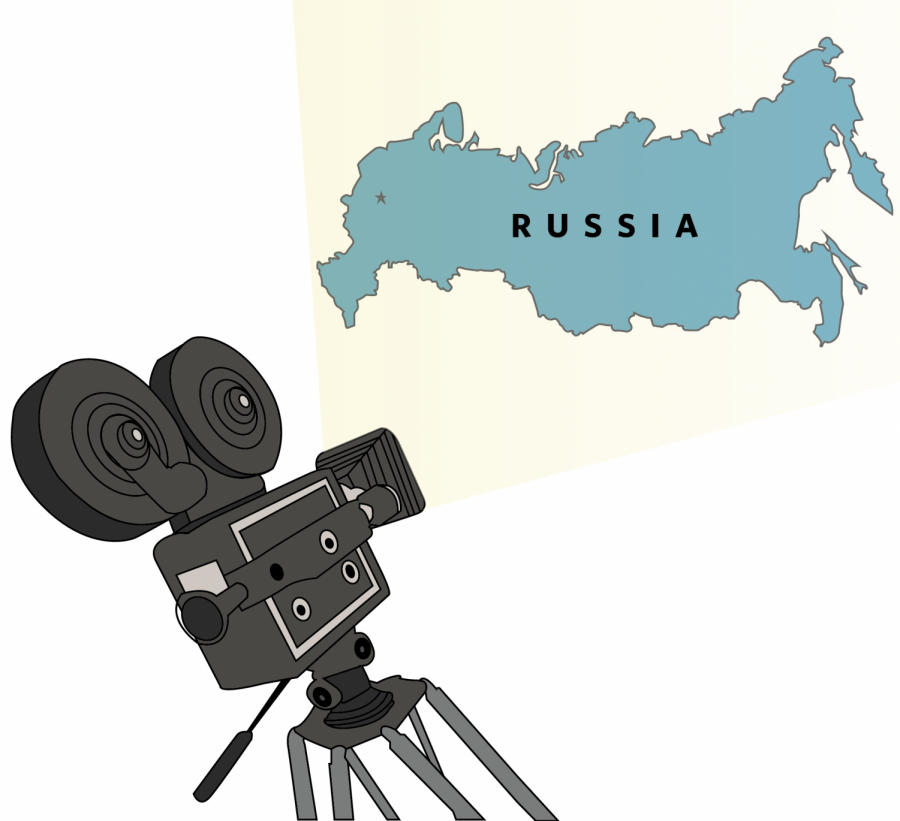Slavic movie night continues with fairytale film
Nov 1, 2017
On Wednesday night, Brian Lim, freshman in Business, found himself alongside a classroom of his linguistic peers in the Foreign Languages Building, the rigid rows of desks evoking the monotony he might recall from an average day’s discussion section.
Nevertheless, the gathering was anything but a dry lecture as the smooth surface of a small, glossy projector — which was tucked away on the ceiling of the tightly enclosed room — sparkled with a soaked rainbow, shimmering from the screen at the front of the dark, intimate space.
Lim along with other University students and faculty gathered for the most recent installment of the University Slavic Department’s Movie Night program.
“I mean, I would’ve come here even if it wasn’t (for extra credit),” Lim said.
The sights may have been pulled from a movie theater, but the sounds wielded an even grander transporting effect. The voices that entered Lim’s ears from the speakers weren’t in English; they were in Russian.
Get The Daily Illini in your inbox!
It set the tone for what Roman Ivashkiv, a professor who teaches in the Department of Slavic Languages and Literature at the University, hopes to be a consistently immersive experience for students.
“It’s an extracurricular event that (the Slavic department members) organize for our students who would like to maximize their exposure time … (with) language and culture,” Ivashkiv said. “We try to make sure learning not only happens inside the classroom but outside the classroom.”
With this being his third year teaching on campus, Ivashkiv has worked continuously with various TAs on promoting the films of Slavic Movie Night, which he thinks plays an important role in the department.
“It’s a tradition that has existed for a while … one that I would like to uphold,” Ivashkiv said.
The TAs, who supervise a breadth of course levels within the Slavic department, advertise the events by distributing posters. Each one announces showings to students and incentivizing them with extra credit for their respective Russian classes.
Marija Fedjanina is a TA and graduate student in LAS who monitored Wednesday’s movie. The film — 2011’s animated “The Son of the Tsar and the Gray Wolf” — felt particularly close to Fedjanina, who was raised in Russia.
“I grew up with the narrative,” she said. “Tsarevitch Ivan, the Firebird and the Gray Wolf. This cartoon doesn’t follow the fairytale … it creates a new one.”
In the film’s 90 minutes, the viewer can point out a hyper-intellectual cat that plays the piano with ease, a sinister prince whose shadow has a mind of its own and a ball of yarn that can shapeshift into a sled.
For someone who isn’t familiar with the language that the film employs, Fedjanina thinks its creative strides can still be appreciated in their own right.
“Even if you can’t get the Russian characters or motifs, (the film) is very comprehensible,” Fedjanina said.
The straightforward plot — which follows a daydreaming farmboy’s quest to rescue a princess from an unwanted marriage — has much in common with those sung by the heart of American pop culture.
Denise Herrera, senior in LAS who attended Wednesday night’s showing, was even able to spot some similarities the film shared with popular Disney movies.
“There were some mirrors that reminded me of ‘Snow White and the Seven Dwarves‘ and a mermaid like Ariel,” Herrera said.
Though “The Son of the Tsar and the Gray Wolf” predominantly showcased a variety of Russian-speaking characters, the Slavic department realizes the language doesn’t solely encapsulate the scope of the region’s diverse cultures.
“Originally, it was ‘Russian Movie Night,’” Ivashkiv said. “Now we’re trying to broaden that perspective and … be more representative of other Slavic cultures.”
One of those efforts is manifested in the Slavic Movie Night’s listing of 1956’s “Man On the Tracks,” directed by Polish filmmaker Andrzej Munk. The movie, which will be shown in Room G30 at Foreign Languages Building on Nov. 8 at 7 p.m., chronicles the mysterious case following the murder of an engineer at the site of his former workplace.
Both the political statements the film makes about the jury’s symbolic social bias and the innovative flashback technique used for the storytelling were influential in the Polish Film School of the late ’50s and early ’60s.
Munk’s insights may be more jarring than a cartoon’s, but Slavic Movie Night aims to be welcoming all the same.
“We’re just here to chill,” Lim said.
For the program’s coordinators, there’s just as much value in what’s on the screen as in what’s in front of it.
“We hope that one of the immediate effects is that they (students studying foreign language) can continue to work on language as well as on culture,” Ivashkiv said. “At the same time, it’s also a community-building event and, hopefully, a fun event too.”






